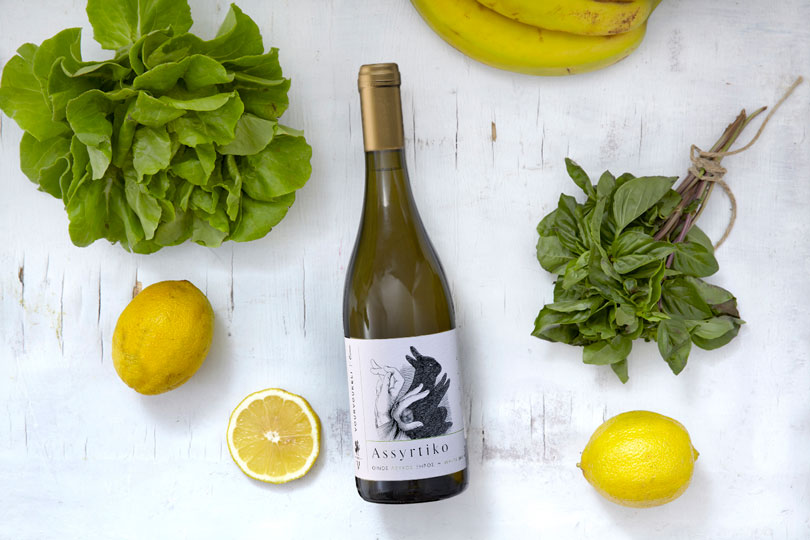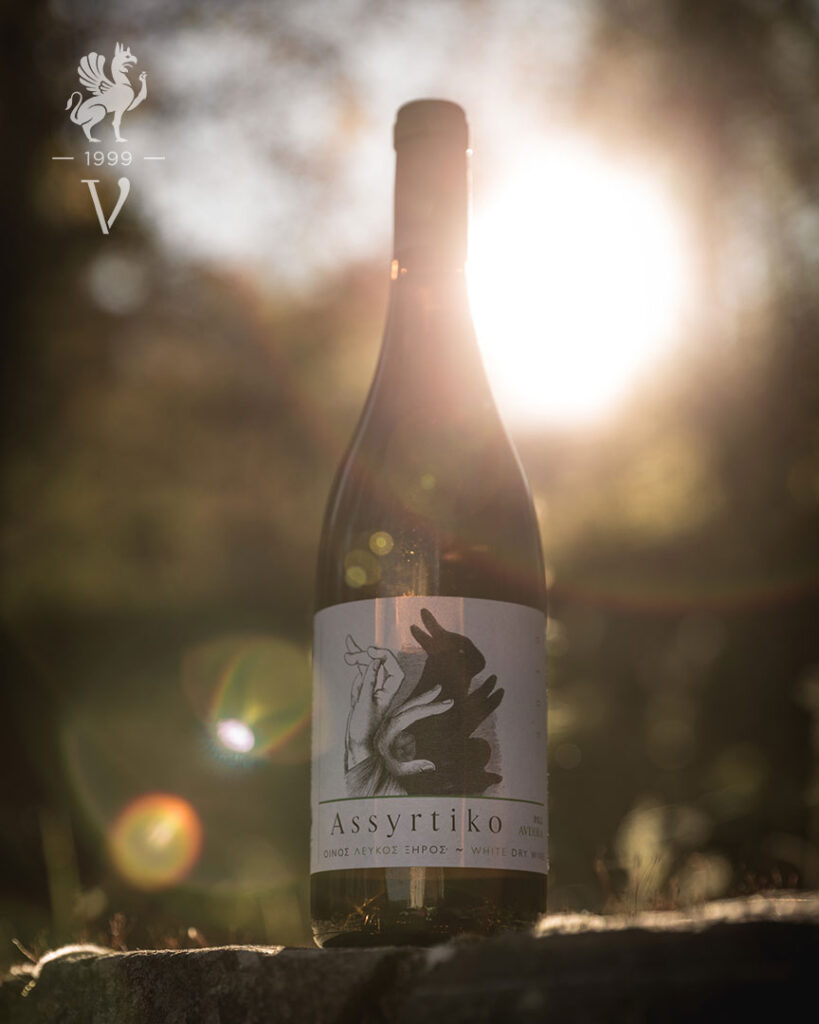Bold, untamed and with an unbridled wittiness, Assyrtiko is an emblematic wine of the Greek vineyard. During the last years, it has gained international recognition and it is especially popular in Europe. It is mainly cultivated in the Mediterranean islands, more specifically in the island of Santorini, but also in other parts of Greece, where it receives the special characteristics of each place.
Its unique personality expresses the distinct terroir of Santorini. Volcanic soil, rich in magnesium and iron, is the basis on which assyrtiko develops the mineral components of its taste. A variety addressed to wine aficionados who appreciate the imposingness of a sharp wine. At the same time, assyrtiko is the best accompaniment for food.
Let’s see below how this rare variety manages to remain engraved in the taste memory of those who opt for it.
Characteristics of Assyrtiko
Assyrtiko is a special wine variety, a fact that is already understood by the way it is cultivated. Santorini, the capital of assyrtiko, has a diverse ecosystem that hosts multiple elements. A volcanic soil in combination with hot, dry summers, piercing winds, which are plagued by sea humidity during the nights. To cope with this environment, assyrtiko is shaped in small “nests” close to the ground, so its leaves can operate as protectors of the fruits to bloom undisturbed. These nests are called “kouloures“, a technique in which the growers tie the vines together, to protect the variety from the hostile scene. The vineyards of Santorini are among the oldest in Europe, with some vines dating back over 70 years. The age of the vines is reflected in the multilevel wines that result from each crop. The villages of Oia, Imerovigli, and Pyrgos present crops of significant interest.
The variety produces fresh white or sugar-rich dessert wines, such as vinsanto. The reaction of assyrtiko to the environment in which it is hosted, is expressed in the sharp acidity of its wines, which are accompanied by high levels of alcohol. The intense acidity gives assyrtiko a versatile character, making it suitable for participating in blends with other white varieties, such as malagouzia and chardonnay. Assyrtiko is also used for the creation of sparkling wines and the traditional Greek retsina wine. Moreover, it is mixed with other indigenous varieties of Santorini, such as athiri and aidani, which balance its intensity.
Apart from Santorini, it is also cultivated in Macedonia and the Peloponnese, while an effort has been made to cultivate assyrtiko in distant Australia. Such is the resilience of the variety and the public’s preference to this rare vine.
The Taste of Assyrtiko
The terroir of Santorini is clearly reflected in assyrtiko. The crisp acidity, the minerality of the soil and, in the olfactory background, the salinity of the sea, are characterizing the wines of the variety. Assyrtiko produces wines with excellent structure, full body and subtle aromas that create space for the mysteries of the soil to be elaborated and give the wine its chalky texture. The naturally high acidity allows for long aging, from 5 to 10 years, maybe more, which further highlights the potential of the variety. In other areas of Greece, we will find wines with a more intense nose, with aromas of lemon, grape fruit, peach and a vibrant floral imprint. Their composition is not as dense as the one we will find in assyrtiko from Santorini, however they do not fall short in quality and expressiveness.
In addition, as assyrtiko is prone to oxidation, growers take advantage of this property to produce sweet wines. From the dehydrated grapes of the variety flow darker wines with aromas of dried fruits, coffee, honey and spices. Vinsanto is the best known version of sweet wine from assyrtiko. Luxurious and impressive, it entertains the sweet receptors of the tongue without being saccharine. It does not have an aging limit, since the passage of time can only favor it.
Food pairing
The acidity of Assyrtiko goes well with fatty fishes, such as salmon, and seafood, such as octopus and squid. In addition, the new prevailing trend is the combination of assyrtiko with sushi. Unusual match, but this marriage of cultures underpins the taste of raw fish. However, if we want to remain in the Greek cuisine, raw shellfish, such as glossy, oysters or sea urchin from the Aegean sea, with a few drops of lemon invite the assyrtiko to a fascinating taste exchange. If you choose a barrel aged wine, grilled squid is probably the best pair for the case.
You may also like:
Limnio, the Ancient Greek Red that is Becoming a Modern Classic



No comments yet. You should be kind and add one!